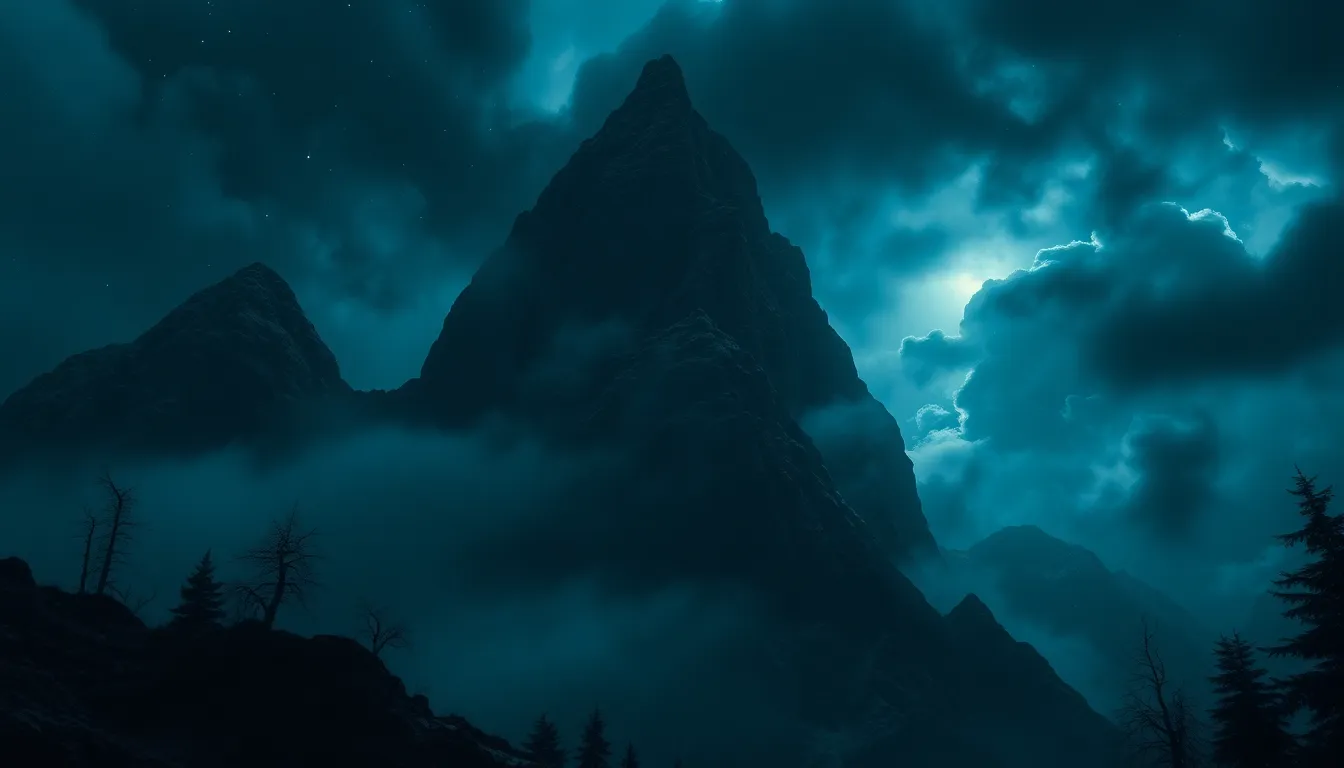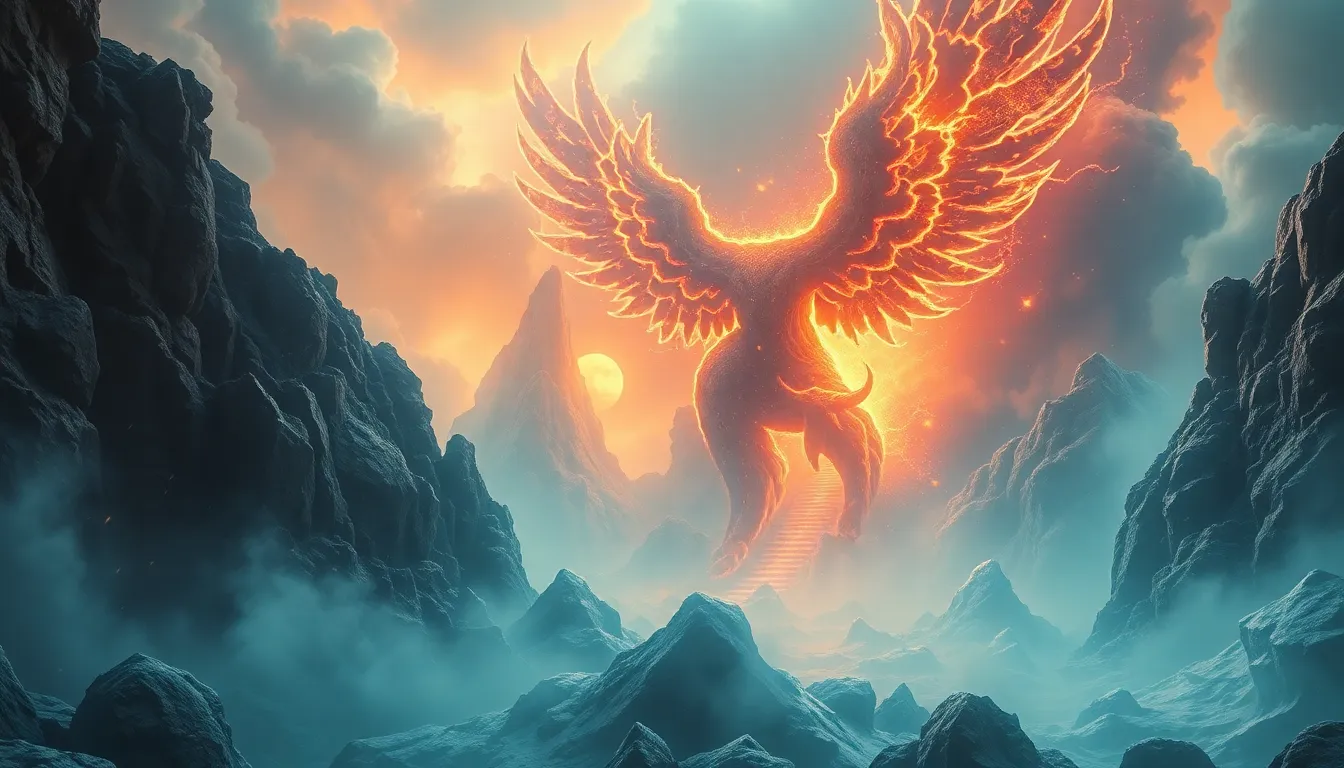The Mountain of the Night: Myths of Darkness and Mystery
I. Introduction: The Allure of the Unknown
The concept of “The Mountain of the Night” is steeped in a rich tapestry of mythology and cultural significance. This mountain, often imagined as a looming figure shrouded in darkness, represents the unknown and the mysteries that lie beyond human understanding.
Myths play a crucial role in shaping human culture, providing insight into the values, fears, and aspirations of different societies. They serve as a means of explaining the inexplicable and navigating the complexities of life.
Across various cultures, darkness and mystery are themes that resonate deeply. From the shadowy figures of folklore to the mystical landscapes that inspire awe, the interplay of light and dark captures the human imagination.
II. Historical Context: Mountains in Mythology
Throughout history, mountains have held a prominent place in mythology and belief systems. They are often seen as sacred spaces, places where the earth meets the heavens, and where mortals can connect with the divine.
- The role of mountains in ancient beliefs: Many ancient civilizations viewed mountains as the abodes of gods and spirits. The towering heights were seen as gateways to the celestial realm.
- Cultural significance of high places: In cultures such as the Inca and the Tibetan, mountains were revered not just for their physical presence but also for their spiritual significance.
- Mountains as symbols of mystery: The sheer scale and often treacherous nature of mountains evoke a sense of awe and fear, making them symbols of the unknown.
III. The Mountain of the Night in Global Mythology
Different cultures have their interpretations of dark mountains, each woven with unique legends and stories.
A. European interpretations of dark mountains
In European folklore, mountains often serve as the backdrop for tales of adventure and peril. The Alps, for instance, are steeped in legends of mythical creatures and lost souls.
B. Asian legends surrounding mystical peaks
In Asia, mountains like Mount Fuji and the Himalayas are not only geographic landmarks but also sacred sites where spiritual journeys take place. Legends often depict these mountains as realms of enlightenment or realms of powerful deities.
C. Indigenous myths and their connection to nocturnal landscapes
Indigenous cultures often incorporate the landscapes surrounding them into their myths. For many Native American tribes, mountains are considered sacred, embodying both protective spirits and ancestral connections.
IV. Archetypes and Themes of Darkness in Myth
Darkness in mythology often carries significant meaning, representing challenges, fears, and the unknown facets of existence.
- The hero’s journey into the dark unknown: Many myths follow a hero who must venture into darkness, facing trials that lead to personal transformation.
- The duality of light and dark: Myths often explore the balance between light and dark, illustrating how both are essential to the human experience.
- Common archetypes associated with night and mountains: Characters such as the wise old man, the shadow, and the trickster frequently emerge in stories set against dark mountainous backdrops.
V. The Influence of Nature on Myth Creation
Natural landscapes have a profound impact on the narratives that cultures create. Mountains, in particular, shape the myths that arise around their formidable presence.
A. How natural landscapes shape cultural narratives
Mountains often dictate the lifestyles, beliefs, and stories of the communities that inhabit their foothills. They become characters in their own right, influencing the myths that emerge.
B. The psychological impact of mountains and darkness
The vastness and isolation of mountains can evoke feelings of insignificance, leading to myths that explore themes of humility and reverence.
C. Nature as a character in mythological stories
In many myths, nature itself is anthropomorphized, taking on human traits and emotions, highlighting the interconnectedness of life and the environment.
VI. Notable Myths of the Mountain of the Night
Many myths are dedicated to the mysterious aspects of the Mountain of the Night, each revealing different cultural interpretations of darkness.
A. The Legend of the Dark Summit: A case study
This legend tells the tale of a summit that no one has ever reached. Legends say that those who attempt to climb it are consumed by darkness, never to return.
B. Tales of hidden creatures and spirits
Numerous myths describe creatures that dwell within the shadows of the mountains. From the Yeti in the Himalayas to the wendigo in North America, these tales capture the imagination and warn of the dangers that lurk at night.
C. The role of the mountain in creation myths
Many cultures have creation myths centered around mountains, depicting them as the first land to emerge from the primordial waters, symbolizing stability and permanence.
VII. The Mountain of the Night in Contemporary Culture
The fascination with the Mountain of the Night continues to echo in modern literature, film, and art.
A. Reflection of ancient myths in modern literature and film
Contemporary narratives often draw on ancient mythological themes, reimagining the Mountain of the Night as a setting for conflict, growth, and adventure.
B. The resurgence of interest in folklore
As society seeks to reconnect with its roots, there is a growing interest in folklore and mythology, inspiring new interpretations of age-old stories.
C. How darkness continues to fascinate modern society
Modern culture’s obsession with the themes of darkness and mystery reflects our enduring fears and curiosities about the unknown.
VIII. Psychological Interpretations of Darkness in Myth
The symbolism of darkness in myths often extends into psychological interpretations, offering insights into the human condition.
A. The unconscious mind and the symbolism of night
Darkness is often associated with the unconscious mind, where hidden fears and desires reside. Myths that explore these themes can serve as mirrors to our internal struggles.
B. The role of fear and the unknown in personal growth
Facing the unknown is a common motif in myths, highlighting how confronting fears can lead to personal transformation and growth.
C. The therapeutic aspects of exploring dark themes
Exploring darkness in myths can have therapeutic benefits, allowing individuals to process their emotions and experiences through storytelling.
IX. The Mountain as a Metaphor: Lessons from the Night
The Mountain of the Night serves as a powerful metaphor in personal narratives, guiding individuals through their own journeys.
A. Personal challenges and the journey through darkness
Just as heroes in myths confront their own mountains of darkness, individuals face personal challenges that require courage and determination.
B. The transformative power of facing fears
Many myths emphasize the transformative power of confronting one’s fears, illustrating that the journey through darkness can lead to enlightenment.
C. The metaphor of the mountain in personal narratives
The mountain can symbolize life’s obstacles and the resilience required to overcome them, serving as a reminder of the strength found within.
X. Conclusion: Embracing the Mysteries of Darkness
The enduring legacy of the Mountain of the Night highlights humanity’s fascination with darkness and mystery. As we explore these themes, we gain insight into our own fears and aspirations, fostering a deeper understanding of ourselves and the world around us. In embracing the mysteries of darkness, we open ourselves to transformation and growth.




